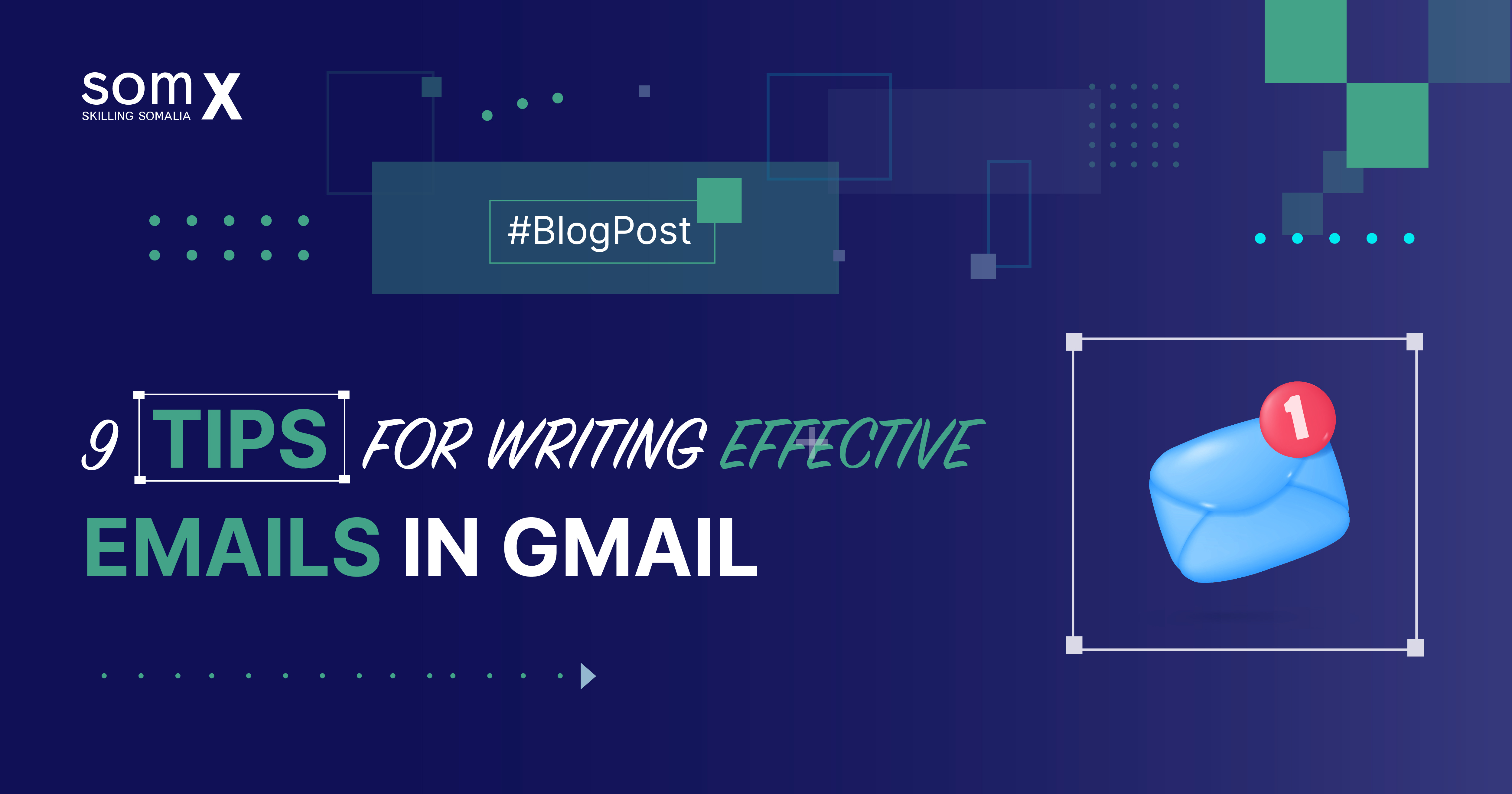9 Tips for Writing Effective Emails in Gmail

This blog post complements our Gmail 101 course. If you'd like to master Gmail and learn even more tips, we highly recommend checking it out.
Writing a professional email might seem straightforward, but there are key details that can make your communication more effective and polished. Whether you're sending a quick note to a colleague or crafting a formal message to a client, here are some essential tips to keep in mind
1. Use a Professional Email Address
Before you even write the email, ensure you're using a professional email address, such as
yourname@gmail.com or yourname@company.com. Do not, under any circumstances, write an
email from an address that looks like neymarka_somalia@gmail.com. In fact, you should not even
own an email that looks like that!
2. Make Your Subject Lines Clear
Your subject line should reflect the content of your email. It has to be relevant to the email content to
ensure your recipient understands the purpose of your message before they even open it. A
well-crafted subject line can increase the likelihood of your email being read.
3. Write It All Before Adding Recipients
If you send a half-written email to someone important, you will regret it for the rest of your life. Save
yourself some sweat, and do not write the recipient's email address until you finish the whole thing.
This will prevent you from sending an unfinished or poorly crafted email by mistake.
4. Keep It Brief
Your emails should be brief and to the point. Aim for one to two paragraphs that clearly convey your
message. You're writing an email, not a novel.
5. Keep the Capitalization Rules in Mind
If you end each sentence with a period, Gmail will automatically capitalize the first word of the next
sentence for you. But in case you somehow manage not to do that, remember to capitalize brand
names like "iPhone" or "eBay" before you write the recipient’s address.
6. Limit Exclamation Points
You do not have to show the person that you are having strong feelings in every line of your email.
Avoid overusing exclamation points. One is enough if you must use it at all. I will probably write
another blog on punctuation, but for now, do not use the exclamation mark more than once in your
emails.
7. Avoid Emoticons
Are you familiar with these :) :D :P? Those are emoticons. Do not use emoticons in emails as you do
in a text message. If you knew your reader well enough, you would not be sending an email, but a
WhatsApp message. Stick to formal language
8. Always Include Words of Appreciation
Regardless of who you're sending the email to, always include a word of thanks. Simple phrases like
"Thanks" or "Thank you" can do the trick and make your email come across as more courteous.
9. Keep the Closing Short
Always end your emails with a brief and professional closing, such as "Regards" or "Best regards."
There's no need to write lengthy farewells. A concise closing maintains the formal tone of your email.
That's it. By following these tips, you will craft professional, effective emails that communicate your
message clearly and respectfully.


